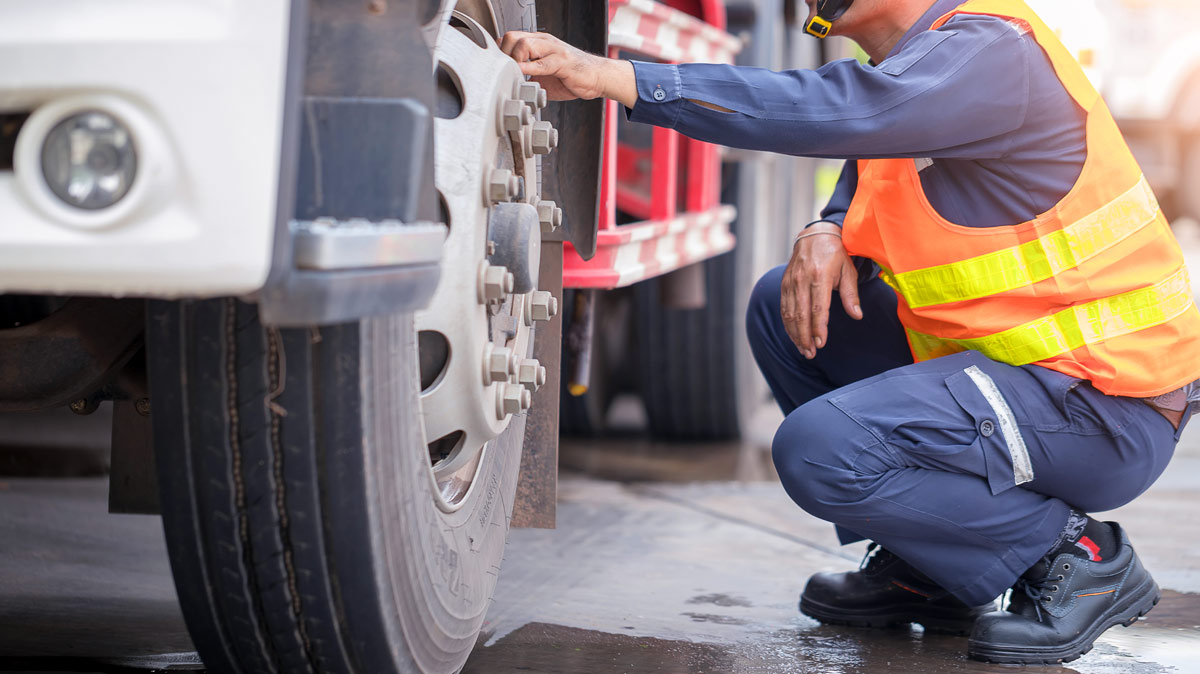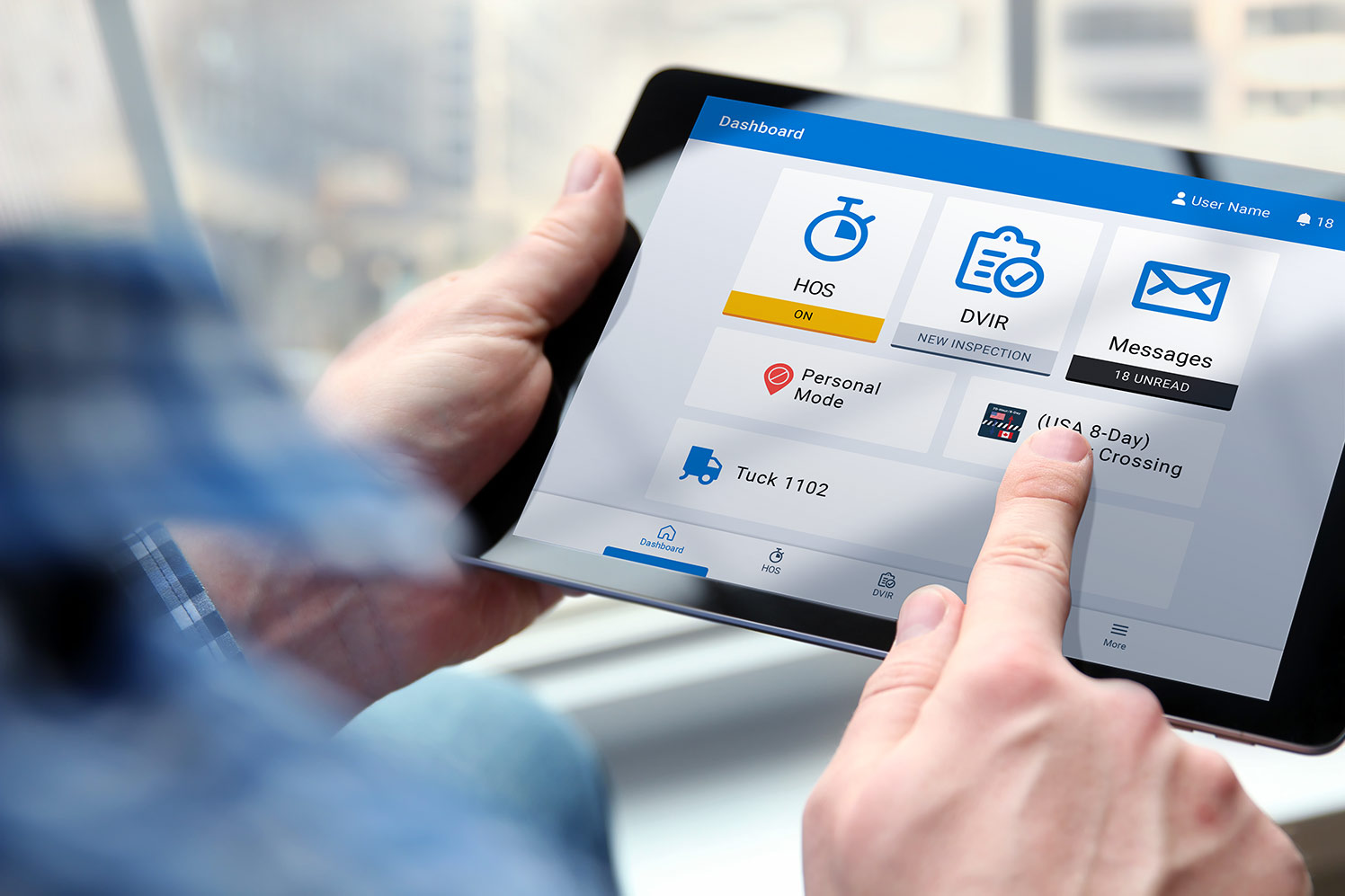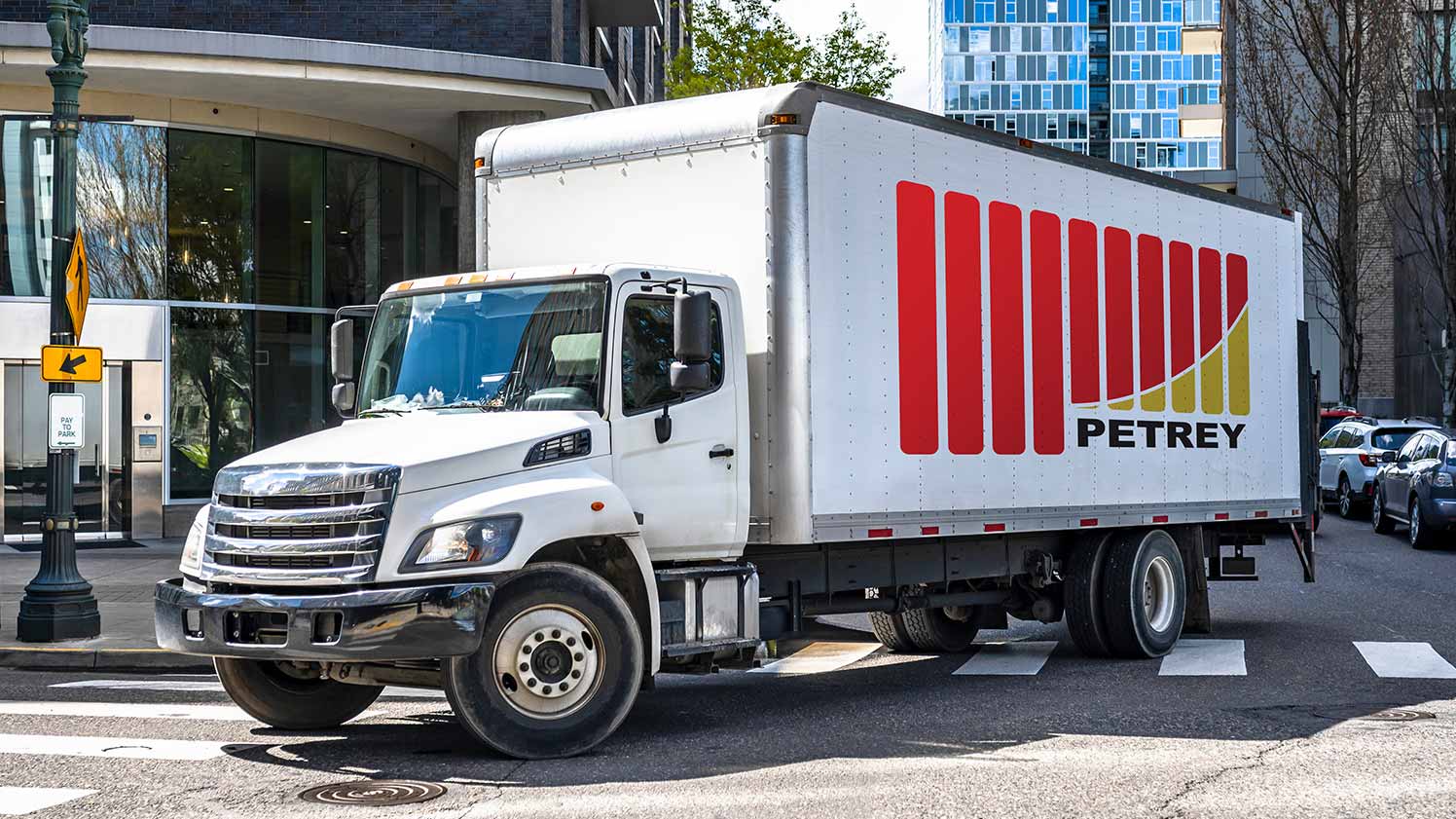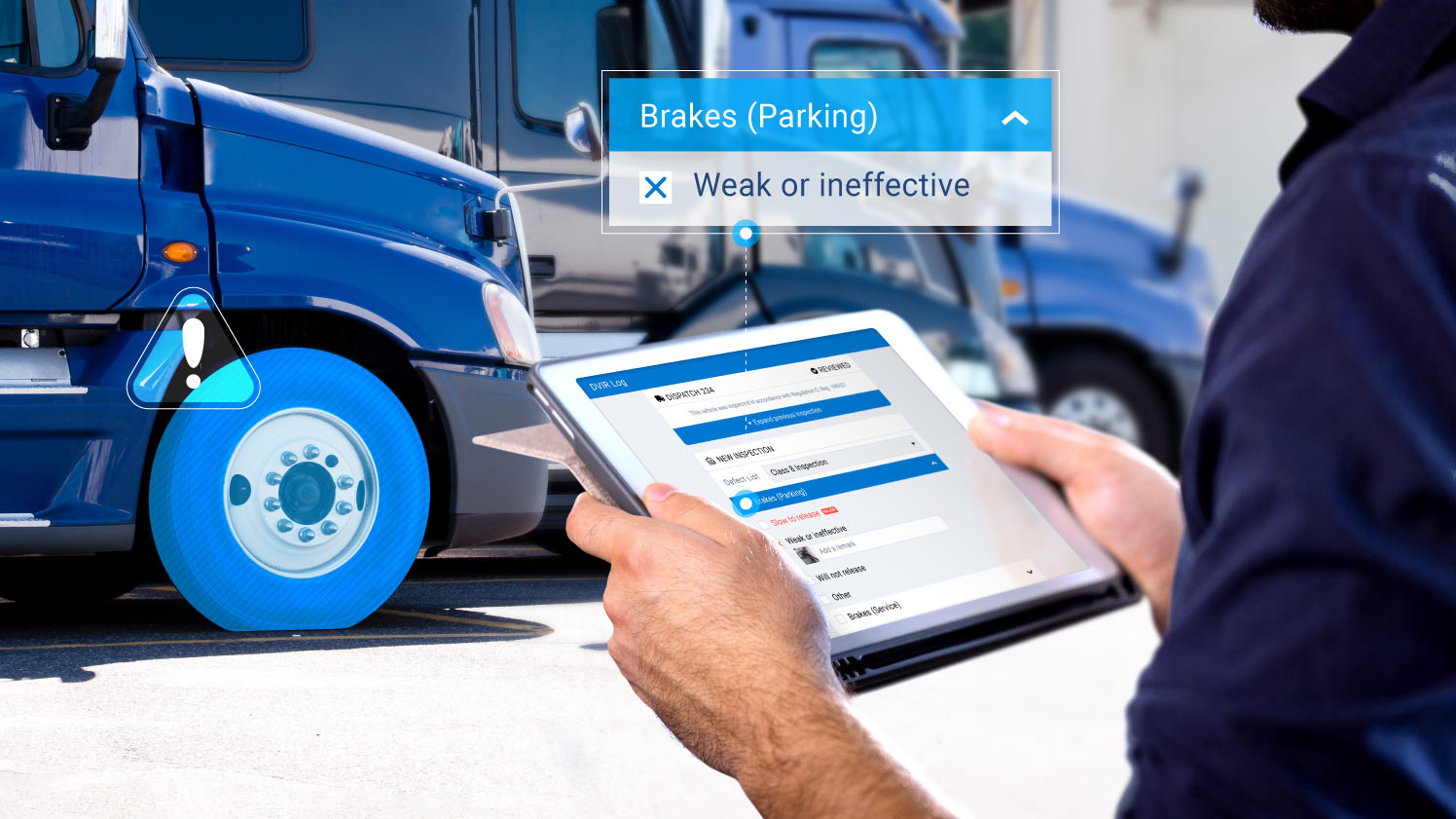.jpg)
DVIR: Driver Vehicle Inspection Report
Strengthen fleet safety and compliance. Switch to electronic reporting with Geotab.
What is DVIR?
A Driver Vehicle Inspection Report (DVIR) is a formal report which confirms that a driver has completed an inspection on a commercial motor vehicle. Drivers must complete pre-trip and post-trip inspections and detail any mechanical defects they encounter. These inspections play an important part in improving road safety while ensuring fleet compliance.
Why is DVIR needed?
DVIRs are enforced by authorities in the U.S. with the aim of increasing safety by reducing the number of collisions, injuries and fatalities involving commercial vehicles. An Electronic DVIR helps improve road safety by enforcing vehicle inspections before and after every trip.
read the case study
40%
reduction in speeding
Wiseway Supply Ltd
read the case study
13%
decrease in severe alerts related to driver safety
Plastic Express
Penalties for not completing an inspection
Motor Carrier Safety Assistance Program (MCSAP) Inspectors are responsible for completing roadside inspections on commercial motor vehicles and drivers. Noncompliance to DVIR regulations may result in fines given at the discretion of the Department of Transportation (DOT) officer. Vehicles which are deemed unsafe during a roadside inspection will be out of commission effective immediately. This unplanned downtime could create a loss in revenue to the carrier.


What does a vehicle inspection include?
The following regulations under section §396.11 must be included in vehicle inspection reports:
- Brakes and air system
- Steering mechanism
- Lights and reflectors
- Tires, wheels, and rims
- Windshield wipers
- Rear view mirrors
- Coupling equipment and fifth wheels
- Safety and emergency equipment
Product
Geotab Drive
This driver platform streamlines Electronic Logging Device (ELD) compliance, DVIR, driver identification, messaging and more from one robust application. Managers can stay up-to-date on fleet compliance with real-time access to information in MyGeotab. Streamline work for drivers with the easy to use DVIR app feature.
View on Marketplace
Video
A driver’s how to guide for DVIR
Inspections must be performed at the beginning of a driver’s shift and again at the end (known as the pre-trip inspection and post-trip inspection). Geotab Drive makes fleet compliance easier than ever through its intuitive electronic vehicle inspection report logging and certification process.
Watch videoCase study
Supporting compliance and improving safety
A medium-sized fleet uses Geotab Drive to strengthen DVIR and ELD compliance, and proactively monitor maintenance.
Read more

Marketplace
DVIR solutions from Geotab Marketplace
Streamline ELD compliance, vehicle inspections, driver ID and more. Solutions include Geotab Drive, elogs, ELD, DVIR and IFTA reports, and solutions for trailers and tachograph.
See solutionsCommonly asked questions
What is DVIR in trucking?
DVIR in trucking refers to a Driver Vehicle Inspection Report (DVIR). A driver’s vehicle inspection report in trucking is a formal record done each day that confirms that the commercial motor vehicle, such as a truck or bus, is safe for operation. A driver completes this daily to let their organization know about any unsafe or missing equipment on their vehicle. Drivers must complete pre-trip and post-trip inspections and report on any mechanical defects. These inspections help improve road safety and are key to ensuring fleet compliance.
Why is DVIR needed? Is DVIR mandatory? Is DVIR required by law?
DVIR compliance is a key component to improving road safety. The purpose of making a DVIR mandatory is to ensure drivers notice any faults or defects in their vehicle and equipment before they become a road hazard. Additionally, the DVIR report allows for repairs to be completed in an optimal timeframe so the vehicle can operate at high efficiency.
DVIRs are required and enforced by the Federal Motor Carrier Safety Regulations. A DVIR is mandatory and is enforced by US authorities with the intent of increasing safety because it can reduce the number of collisions, injuries and fatalities involving a commercial vehicle. An Electronic DVIR helps to improve safety on the road because it enforces vehicle inspections before and after every trip.
Who needs a DVIR? Do I need to be concerned with DVIR compliance?
DVIR compliance rules apply to drivers of commercial vehicles, such as trucks and buses, that weigh over 10,000 pounds or have over 9 passengers or vehicles that contain hazardous materials.
Drivers of vans, buses, and other passenger-carrying vehicles are required to complete a DVIR report once they have completed their driving the vehicle for the day and it must indicate if there is a defect to report or not.
Truck drivers and other property-carrying vehicles are only required to prepare a DVIR if there is a safety-related defect to report.
Who is DVIR exempt?
Companies that operate only one vehicle that weighs over 10,000 pounds or have over 9 passengers or vehicles that contain hazardous materials, are exempt from DVIR rules.
What is required on a DVIR? What are the electronic DVIR requirements?
A DVIR includes inspection, report of defects, report signature, and any corrective action needed. DVIRs need to include: date, vehicle identity such as fleet number, license plate number, etc. Additionally, driver signature, the signature of the mechanic or other person who repaired the vehicle or person who decided that repairs were not needed, the signature of any subsequent driver of the vehicle acknowledging the repair was either not needed or completed.
Some electronic DVIRs enable fleets to customize inspection report criteria based on different equipment or distinctive inspection requirements.
DVIR requirements include inspection, identification of defects, signing the report, and corrective action.
DVIR regulations indicate what has to appear on a DVIR, but not how it has to appear.
What is an electronic DVIR? What are the requirements for an eDVIR or electronic DVIR?
DVIRs have historically been paper-based. However, now more drivers have converted to electronic inspection reports, also known as eDVIRs. An eDVIR, or electronic DVIR is a paperless, or digital version of a driver vehicle inspection report. Similar to the paper DVIR, an electronic DVIR must be completed daily by commercial vehicles drivers on any commercial vehicle they operate. They typically include characteristics such as vehicle make and model, year, identification number (VIN), and license number.
Are there penalties for not having a DVIR?
Yes, there are penalties for not having a DVIR. Motor Carrier Safety Assistance Program (MCSAP) Inspectors complete roadside inspections on commercial motor vehicles and drivers. Anyone found not in compliance with DVIR regulations may be fined at the discretion of the Department of Transportation (DOT) officer. Any vehicles deemed unsafe during a DOT roadside inspection will immediately be out of commission, resulting in revenue loss for the carrier.
How long do you keep DVIRs?
As per the Federal Motor Carrier Safety Administration (FMCSA), a carrier must keep the original copy of each DVIR for 3 months form the date that the report was prepared. While 3 months helps with DVIR compliance, there are benefits to long-term record retention for fleets. An electronic DVIR allows for long-term record retention without the concern of storing excessive amounts of paper.
What are the benefits of an electronic DVIR?
Paperless Driver Vehicle Inspection Reports, or electronic DVIRs, enable fast and intuitive submission of pre-trip and post-trip inspections. Reports are filed electronically, allowing fleet managers to receive real-time post-trip and pre-trip inspections quickly. This creates a streamlined FMCSA-compliant electronic reports which ultimately can reduce downtime due to digital notifications of asset defects, easily flagging any vehicles that have bypassed or missed inspection reports, which reduces the risk of DVIR compliance violation and strengthens fleet safety and DVIR compliance.
What DVIR solution does Geotab offer? Can Geotab help with DVIR compliance?
Yes! Geotab Drive helps you meet DVIR compliance. This comprehensive platform streamlines Electronic Logging Device (ELD) compliance, DVIR, driver identification, messaging and more via one application. Fleet managers can stay up-to-date on DVIR compliance and driver work is streamlined via the DVIR app feature.
Streamline fleet compliance today
Learn more about how simple it is to use our web-based software and fleet management devices to improve fleet compliance.